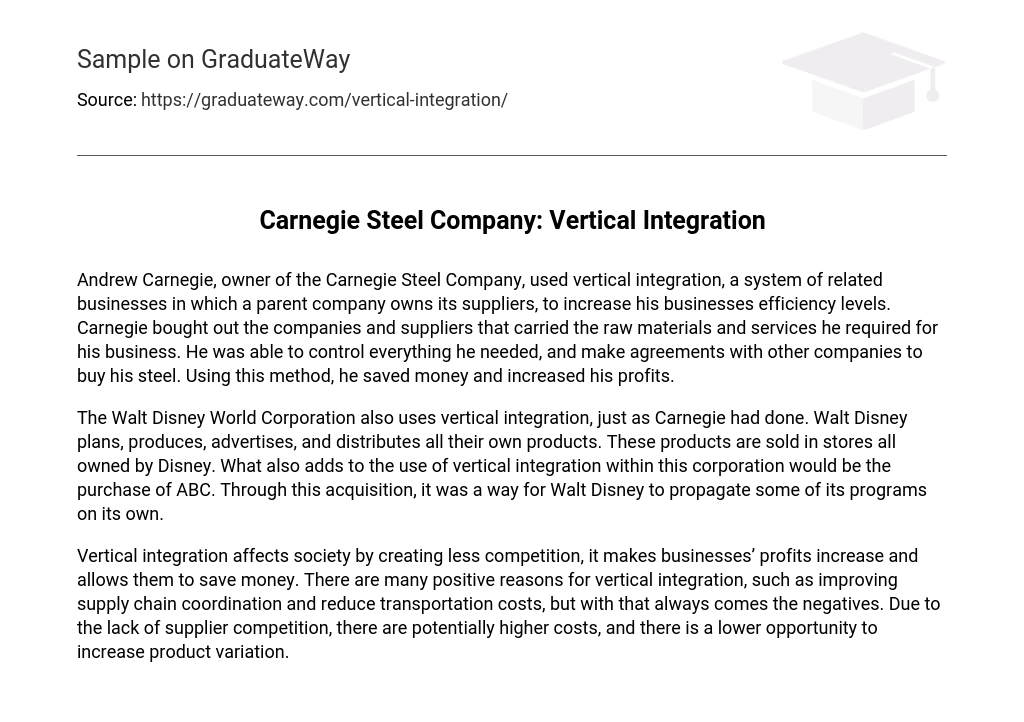Andrew Carnegie, the owner of Carnegie Steel Company, employed vertical integration to enhance the efficiency of his businesses. Vertical integration entails a network of interconnected businesses, where the parent company owns its suppliers. Carnegie acquired the companies and suppliers that provided the necessary raw materials and services for his business. This enabled him to have complete control over all aspects of production and allowed him to negotiate agreements with other companies for purchasing his steel. By utilizing this strategy, Carnegie was able to save money and boost his profits.
The Walt Disney World Corporation utilizes vertical integration, similar to Carnegie’s approach. They handle planning, production, advertising, and distribution of their products, which are all sold in Disney-owned stores. Additionally, the acquisition of ABC further enhances their use of vertical integration as it allows them to independently promote some of their programs.
Vertical integration has an impact on society as it reduces competition, increases business profits, and enables cost savings. Despite the benefits of achieving better supply chain coordination and lowering transportation costs, there are drawbacks. The lack of competition among suppliers can lead to higher costs and restrict opportunities for product variation.





